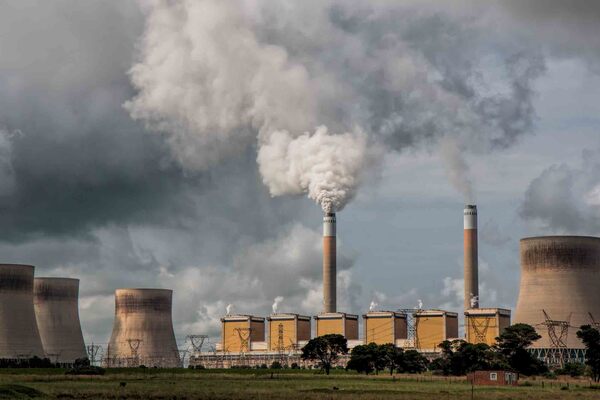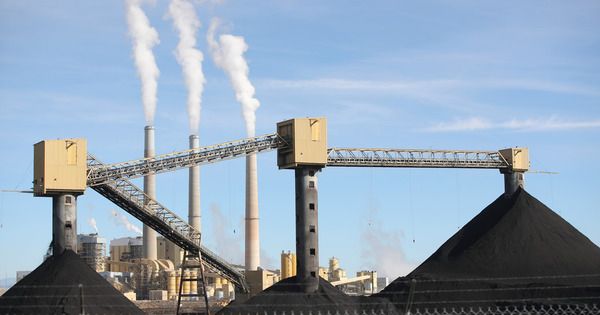Coal phase-out is vital to address climate change, but it can have a detrimental impact on workers and local communities who rely on coal for a living. Researchers at Chalmers University of Technology in Sweden and Central European University in Austria investigated government plans for coal phase-outs around the world and concluded that more than half of them include monetary compensation for affected parties. This projected global compensation totals USD 200 billion, but it excludes China and India, the world’s two largest coal users, which do not yet have phase-out plans. According to the analysis, if China and India decide to phase out coal as quickly as possible to meet the Paris climate targets and offer comparable compensation, it will cost up to USD 2 trillion.
To slow global warming, coal use must be phased out. Many countries, primarily in Europe, have moved to phase out coal, although these measures may destroy businesses, increase unemployment, and cause economic hardship in coal-dependent regions. In response, some countries have implemented ‘just transition’ programs, in which governments assist badly impacted businesses, people, and areas. Germany, for example, has promised more than EUR 40 billion to help individuals affected by the coal phase-out.
Previously, coal phase out has often been blocked by the interests opposing it. Many countries have put money on the table through ‘just transition’ strategies which has made coal phase-out politically feasible.
Jessica Jewell
“Previously, coal phase out has often been blocked by the interests opposing it. Many countries have put money on the table through ‘just transition’ strategies which has made coal phase-out politically feasible,” says Jessica Jewell, Associate Professor at Chalmers University of Technology, and one of the authors of the study.
The researchers have studied all countries with coal phase-out plans around the world and found that those with the most coal power production and with plans for rapid phase-out, have compensation policies in place.
In total, these 23 countries with 16 percent of the world’s coal power plants have pledged about USD 209 billion in compensation. This may sound like a lot of money, but the researchers point out that it equates to roughly 6 gigatons of avoided CO2 emissions and the cost of compensation for coal phase-out per tonne of avoided CO2 emissions (USD 29-46 per tonne) is actually well below recent carbon prices in Europe (~USD 64-80 per tonne).
“So far these ‘just transition’ policies are consistent with, or lower than, the carbon prices within the EU, which means they make sense in terms of climate change. But more funding is likely needed if we want to reach the Paris climate target,” says Jewell.

This is because achieving the goals of the Paris climate agreement will not be possible without participation of the world’s major coal consumers, China and India, which have more than half of the world’s coal plants, but no phase-out plans currently in place. The study finds that, for China and India to adopt compensation policies similar to those already in place, the estimated compensation amount for both countries would be USD 2.4 trillion for the 2°C target and USD 3.2 trillion for the 1.5°C target.
“The estimated compensation for China and India is not only larger in absolute terms, but would also be more expensive compared to their economic capacities,” says Lola Nacke, a doctoral student at Chalmers University of Technology, and one of the authors of the study.
A big question thus is where such large sums of money would come from. Today about half of all compensation is funded from international sources such as Just Energy Transition Partnerships* supporting coal phase-out in Vietnam, Indonesia and South Africa. International finance might also be needed to support future coal phase-out compensation in major coal consuming countries. However, the researchers point out that the estimated amounts of compensation for China and India alone are comparable to the entire international climate finance pledged in Paris, and larger than current international development aid to these countries.
“Discussions about the cost of climate change mitigation often focus on investments in renewable energy technologies – but we also see it’s essential to address social implications of fossil fuel decline to enable rapid transitions,” says Lola Nacke.
Fact Box
*Just Energy Transition Partnerships – Just Energy Transition Partnerships (JETPs) are new multi-lateral structures for accelerating the phase-out of fossil fuels. These intergovernmental partnerships coordinate financial resources and technical assistance from countries in the Global North to a recipient country to help it in this regard. JETPs related to coal phase-out are currently in place for Vietnam, Indonesia and South Africa.
EU Just Transition Fund – The fund is the first pillar of the Just Transition Mechanism. The Commission provides support to Member States having identified the territories expected to be the most negatively impacted by the transition towards climate-neutrality. The Just Transition Fund supports the economic diversification and reconversion of the territories concerned.
Paris Climate Agreement — To tackle climate change and its negative impacts, world leaders at the UN Climate Change Conference (COP21) in Paris reached a breakthrough on 12 December 2015: the Paris Agreement. The Agreement sets long-term goals to guide all nations to:
- substantially reduce global greenhouse gas emissions to hold global temperature increase to well below 2°C above pre-industrial levels and pursue efforts to limit it to 1.5°C above pre-industrial levels, recognising that this would significantly reduce the risks and impacts of climate change.
- provide financing to developing countries to mitigate climate change, strengthen resilience and enhance abilities to adapt to climate impacts.















